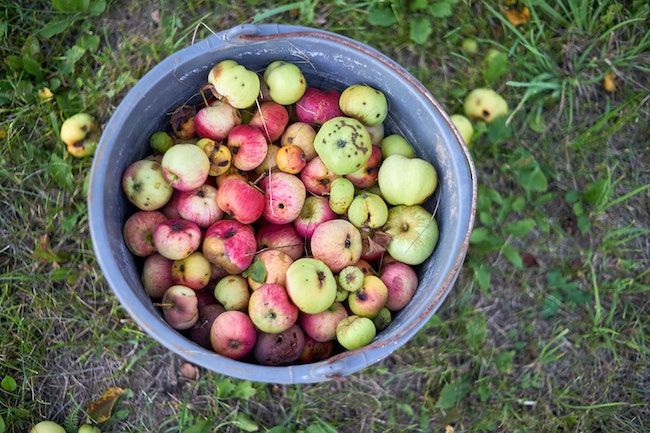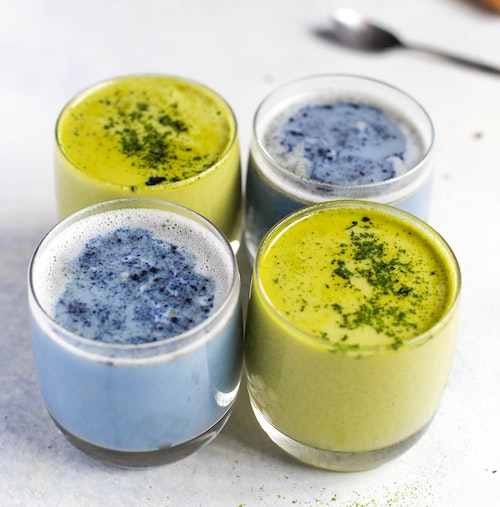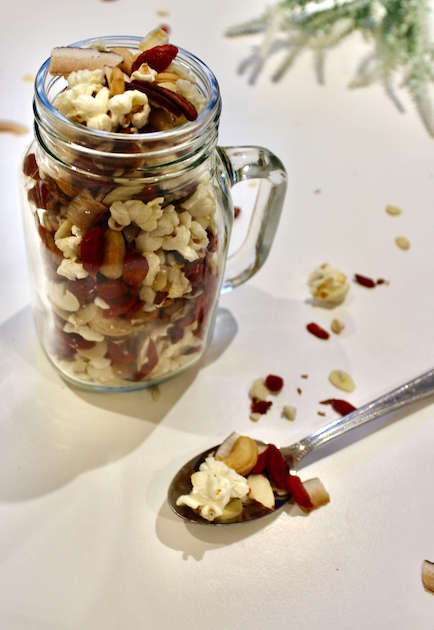To state the obvious, wasting food is never fun. It has been predicted that there will be extreme food shortages in the next few decades, and being aware of this only makes wasting food feel even worse.
When food spoils, you aren’t just annoyed about having to waste it when not everyone has food, but you are also resentful about wasting the money you used to pay for that food, making it a pet peeve for almost anyone.
To reduce the occurrence of this unpleasant experience, it helps to first know which factors affect the lifespan of foods, which I have listed below.
Foods parish faster with increased exposure to the following factors:

- Heat
- Oxygen
- Moisture/humidity
- Light
- Spoilage bacteria, of course
With this knowledge, we can reduce food waste by exerting more control over these factors by storing all foods in airtight containers or ziplock freezer bags (to reduce exposure to oxygen, moisture, and spoilage bacteria), and/or storing them in the freezer (to keep them cold and away from light). Additionally, regularly cleaning out your fridge and wiping down all surfaces (ideally with something gentle, natural, and CULINARY SAFE) should also reduce any amount of spoilage bacteria lurking in your fridge, which will likely also benefit your health.
Freeze Food to Reduce Food Waste
Did you know that frozen produce can sometimes be even more nutritious than fresh produce?
Nutrition and health expert Jolene Hart states the following in her book Eat Pretty Every Day (Amazon) on page 199:

“While we often think of fresh produce as the most nutrient-dense option we have access to, frozen produce can actually have higher levels of nutrients than fresh, especially if fresh food travels long distances or sits in storage before arriving at your market. Carrots, apples, beets, and other produce are often stored, unfrozen, in a warehouse (or your fridge) for months, loosing nutrition all the while. Frozen produce—which is often frozen immediately after being picked in a process that locks in its nutrients until you defrost or cook it—is an undervalued beauty food resource, inexpensive and incredibly convenient.”
Foods that freeze well include anything that you plan on making a liquid out of (e.g., smoothie ingredients, soup ingredients, etc.). This is because as these foods melt, release water, and loose their shape, you won’t really notice these less-than-ideal attributes if they are blended into a liquid. Foods that you intend to cook with also generally freeze well since the heat (from cooking) helps evaporate some of the ice that melts off it.
For a list of specific kinds of foods that last well in the freezer, as well as instructions on how to ideally store them in the freezer, please refer to my list below titled “Foods That Freeze Well & How to Store Them.”
Generally speaking, most foods last fairly well in the freezer for up to 2-3 months.
Be sure to label all foods with the date it was added to the freezer so you know when to ideally use it up by, before it’s likely to become freezer-burned and loose some of its nutritional value. Also strive to freeze produce at their peak ripeness, for heightened nutritional benefit.
Other Actions to Take to Reduce Food Waste:

- Buy fruits and vegetables that still have the stems and/or roots intact. This keeps produce fresh for a longer time, leading to less food waste.
- Recognize which fruits and vegetables you repeatedly buy, just out of habit, thinking that you’ll use it but it always goes bad. Say “no” to these foods, at least for a short while, unless you actually plan on using it for a specific recipe. For me, these foods are cucumber and avocado, simply because they’re so versatile.
I also always feel tempted to purchase packaged avocados because they are generally much cheaper for the amount you get, then purchasing them individually. But if I only use up 2 of them, then what is the point? It would have been cheaper for me to have just bought 2 individual ones (not to mention less wasteful), but it is so easy to overestimate how much healthy food you’ll actually end up eating, thinking that each time will be different. I know people who do the same thing with lemons and limes, as they, too, surrender to the temptation of buying them in bulk, when they almost never use more than 2 or 3 of them.
- Plan your snacks/meals in advance, prior to grocery shopping. This will enable you to know exactly what to buy and how you intend to use it, so that you don’t buy too much food. Try to plan meals and snacks that require many of the same ingredients, to ensure that they all get completely used up in a timely manner.
- Become mindful of the quantity or volume of produce you tend to actually consume each week (or until your next shopping trip), and try to only buy that amount of produce for every shopping trip. You can become aware of this by keeping track, in-between shopping trips, of how much food you bought, which foods spoiled, and the quantity of foods that spoiled, as well as which foods and how much of those foods were consumed.

- For example, the amount of produce I often purchase on a bi-weekly basis includes the following:
- 5-7 handheld fruits, such as apples, pears, or peaches
- 1 other kind of fruit, such as grapes or 1 batch of bananas
- 1 kind of leafy greens (e.g., spinach), 1 large batch of a vegetable (e.g., tomatoes), OR 1 larger kind of vegetable, such as squash, eggplant, or a small pumpkin
- 2-3 of a smaller kind of vegetable, such as cucumbers or zucchini
- 1 more small kind of vegetable—for the sake of adding additional flavour to foods, such as an onion
- 5-7 handheld fruits, such as apples, pears, or peaches
- Wipe down and air out your leafy greens, as well as the containers they come in, to remove as much moisture as possible. Or, if they came in bags, replace the bag with a dry one. You can also loosely wrap a dish towel or paper towel around them (inside the bag or container they’re stored in) to keep them as dry as possible from condensation. I got this tip from my mother, who airs out and wipes the wet parts of her spinach each day (since it goes bad so quickly), and loosely wraps a paper towel around it. These are also great tips to follow with herbs like cilantro or parsley.
- Buy produce that comes in an ideal size for multiple single uses, if possible (e.g., mini cucumbers instead of English cucumbers). Don’t you hate having half-eaten onions, cucumbers, etc.? As I’ve explained above, produce obviously goes bad faster when it’s been cut (open), since that exposes it to more oxygen. Hence, it is better to purchase produce that is smaller in size so that when you use it, it gets used up entirely, one at a time. Doing this instead makes a lot of sense if you only use a little at a time. For example, I often only need 1 mini cucumber for a sandwich. It is far more practical for me to use up an entire mini cucumber (which is the prefect size for what I need it for), rather than a small portion of an English cucumber, as cutting it open would significantly shorten its lifespan. It is better to just use things up right away, if possible.
Foods That Freeze Well & How to Freeze Them
Vegetables:
- Cauliflower, broccoli, peas, green beans, carrots (peeled), potatoes, corn, and okra: prep and chop them first for easy, convenient use in the future, and simply store them in airtight containers or thick ziplock freezer bags with as much air squeezed out of them as possible.

- Spinach: lying horizontally flat down in a ziplock freezer bag, in a fairly thin layer, with the leaves somewhat spread out, to keep them from sticking to each other too much. Freezing them this way will also make it easy for you to grab an amount, since they will hardly be sticking to each other, allowing you to easily break off any amount of leaves. Squeeze out as much air as possible from the ziplock bag prior to freezing it.
- Herbs: same way as with spinach. Herbs that freeze well in my own experience include: oregano, rosemary, and basil.
Other leafy greens may work well, but I haven’t tried this. My guess is that any leafy greens with thicker and larger leaves probably work best.
- Onions: like most people, I hate chopping onions, and will often avoid cooking with them because I don’t like that they make you cry. However, if they were already chopped for me and ready to be used, then I would feel much more inclined to cook with it. I also like my onion chopped very finely, which of course means extra chopping and extra crying.
So to make chopping and cooking with it so much easier and tear-free, I will finely mince it in a food chopper (Amazon) or food processor (Amazon) and freeze them in ice-cube trays, ideally ones with a lid to keep oxygen and moisture out as much as possible. The volume of each cube is approximately equivalent to 2 tablespoons of minced onions. Of course label what is in the ice cube tray for easy identification because minced onion, garlic, and ginger can often look very similar to each other when frozen.
- Minced ginger and garlic: you can also mince this in a food chopper or processor, but be sure to mince the ginger first so that it doesn’t end up tasting a bit like onion or garlic, which have very overpowering tastes. In between mincing onion or garlic, I would also wash your food processor or chopper so that the taste of each vegetable does not get affected by each other (unless you plan on always cooking with them together anyways).
Place the minced ginger and/or garlic in an ice cube tray, preferably one with a lid. Label it with what it is since, again, onion, ginger and garlic can often look very similar when frozen.
Fruit:
- Bananas (peeled), avocados (pitted with the skins removed), berries, pitted cherries, and seedless grapes: simply prep and chop these vegetables and then store them in the freezer, in airtight containers or ziplock bags, with all the air squeezed out. With bananas, I personally prefer to simply halve them because 1) I often only use half of a banana at a time and 2) so that I know exactly how much of a banana I am using for my recipes.

Other:
- Milks, creams, or sauces that you don’t use very often with an approaching expiry date. I often only need a little bit of coconut milk or full-fat cream for a recipe, which has led me to unintentionally forget about the rest of it, causing it to spoil. So, freezing the remaining amount makes a lot of sense for me, as the next time I need some, I can simply defrost the amount that is required for a recipe, rather than buying more (and unintentionally wasting it all over again). Store it in ice-cube trays and be sure to label what they are so you don’t get them mixed up and accidently use the wrong kind of milk, cream, or sauce. You can purchase silicone?? ice-cube trays with lids on them (to keep them airtight) here.
- Egg whites and egg yolks: separate the egg whites from the egg yolks and mix each with a tiny bit of salt, if you intend to use it for a savoury recipe, or sugar, if you intend to use it for a sweet recipe, as this will help to preserve the texture of the eggs.
You can store them in ice cube trays with larger cube sizes (or regular ones if they fit), or containers that are the right size for being airtight. If you usually cook with multiple egg whites or egg yolks at once, then feel free to store more than one together in the same container, but remember to label how many there are in it. I normally only need one egg yolk or egg white at one time, so I personally prefer to keep each one separate from each other.
- Fish and other forms of meat: I’m not too familiar with the ideal way to do this, as I am pescatarian, so you can read more about how to ideally store them in the freezer here. But as with anything you freeze, be sure to store your meat in airtight ziplock freezer bags or containers.
- Bread: in a thick bag and perhaps double-bagged to protect it from freezer burn, with parchment paper in-between each bread slice to prevent them from sticking to each other. If the bags aren’t transparent, label what’s inside so that it doesn’t get forgotten.
What are some things you do to reduce food waste?
Latest Posts:
Healthy Snacks & Teas
In order to be able to maintain a healthy diet, it helps to have a wide supply of healthy…
Beliefs Preventing You From Eating Healthier
Of course, there is nothing wrong with the occasional binge. However, it can become very problematic if it happens the…
Small, Simple Ways to Easily Make Healthier Decisions
With the use of a few simple tips, leading a healthy lifestyle doesn’t have to be as hard or as…
Holistically Beneficial Self-Care Practises to Try
I personally believe that one can never get enough self-love and care. Often, people understandably confuse…
Sweet & Salty Healthy Trail Mix
Here, I present to you a very hearty and healthy trail mix that combines sweet, salty, and savoury flavours into…
Creamy Banana Zoats (Zucchini Oats)
There are so many things I love about this banana zoat recipe! In fact, here’s a…
Disclaimer: Some of the links on this site may be sponsored, meaning that I may earn a small commission or other compensation from them at no additional cost to you. All the content on this website is intended for informational purposes only, based on my own personal experience, ideas and knowledge. It is not intended to replace the advice of a qualified professional. In the case of a mental, emotional or physical emergency, please dial 911 or the crisis line in your region immediately.







0 Comments